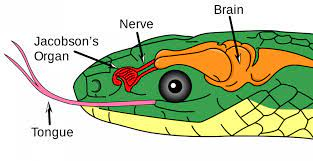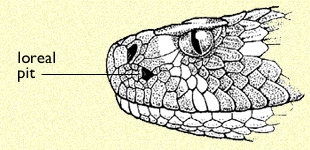All about Snakes
WHY ARE SNAKES IMPORTANT?
Maintain ecosystem balance and control disease outbreaks by regulating pest populations (e.g. rats, frogs, insects…)
Neurotoxic venom can be used in medications for pain relief without damaging nerves or muscle tissue
TAXONOMY:
ANATOMY:
--> HEART: All reptiles have a 3-chambered heart with no solid septum so oxygenated and deoxygenated blood come into contact. * Crocodiles DO have a septum and 4 chambers.
--> AUTOTOMY: (e.g lizards) is the ability to sacrifice a limb/tail which can fall off and grow back as cartilage to distract predators
--> JAWS:
-Can stretch open jaw which can come unhinged
-to avoid choking while eating prey they can breathe through bottom of jaw with extension of trachea
SENSES:
-> VISION:
Large round eyes with circular pupil = diurnal active hunters
Slit shaped pupils = nocturnal/ ambush hunters
—> SCENT:
-Use forked tongues to pick up smells and distinguish directionality
-Jacobson's organ in the opening/cavity chamber on the roof of the mouth where the tongue goes in after picking up scent particles
—> HEARING:
No external ears but use vibrations around them placing head flat on surfaces
—> HEAT DETECTION
Some species have sensory Inputs called Loreal Pits placed around their mouths to help hunting when they can’t rely on vision.
—> TOUCH (scales)
-Smooth scales: shiny and smooth surfaces
-Keeled scales: have a middle ridge
GROWTH AND DEVELOPMENT
Shedding/Ecdysis
-Old skin lifted and replaced
-Eyes appear milky and they secrete liquid that helps shedding, they even shed an eye cap bc they don’t have eyelids
Reproduction
-triggered by changes in weather (e.g. rainfall)
-Females leave pheromone trails as they move
-snakes fight for the right to mate but don’t use venom because this can increase their visibility for predators
--> Reproductive organs: males gave two sided penis so they can use it either side and barbs on structure used to hook into female system
-->Birth
-Not true live birth as individuals are born in thin membranes
-most species don’t need parental care but Burmese Pythons are an exception
DEFENSE MECHANISMS
-Size: Making themselves look larger (standing up and spreading hood or inflating neck)
-Spitting: distraction/temporarily disabling predator, not attack
-Thanatosis: playing dead, flip over showing underside, secrete compounds form cloaca to smell bad, some can even voluntary bleed from mouth
-Apostematic coloration: warning signal to predators indicating toxicity
-Auditory (e.g. rattle snakes) to indicate locations, can make the sounds seem rlly close or really far
-Venom can be found in different types of fangs:
1- Mid-hinged fangs found in the middle of the mouth (Opisthoglyphous) no muscular control, require pressure from biting to secrete venom
2- Rear hinged fangs can use a muscular control to inject venom
3- Front hinged fangs (large) can be brought forwards to inject venom
4- No fangs (Aglyphous) rows of small back facing sharp teeth
POISON VS VENOM
bite or sting= venomous
ingested = poisonous
venom composition: amino acids, proteins and enzymes
3 types of toxin:
-Cytotoxin: (e.g. Adders, spitting cobras & stilleto snake)
Changes osmotic potential of cells damaging cell membranes and resulting in destruction and bursting of cells.
-Neurotoxin: (e.g. mambas and non-spitting cobras) blocks signals at neuromuscular junctions causing muscular paralysis or progressive weakness.
-Hemotoxic: (e.g. Boom slang and vine snake)
Disrupts clotting mechanisms of body and lowers blood pressure so you go into shock, compromising ability to form scabs/clots leading to progressive bleeding at any wound/injury.
EXAMPLES OF DANGEROUS SOUTH-AFRICAN SNAKES
-Puff Adders take 1/4 of a second to strike their prey injecting cytotoxic venom that paralyses them.
-Boom slangs are the most venomous snake in Africa (Hemotoxic venom) where one drop can kill ~20 people
-Spitting Cobras are the most famous snake (Neurotoxic)



